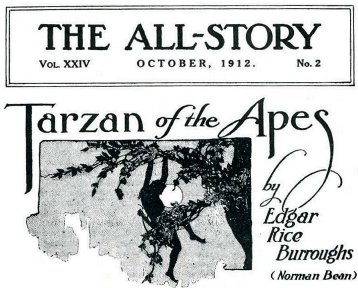 This
portfolio is a celebration of the 100th anniversary of the 1912 appearance
of Tarzan in The All-Story magazine.
This
portfolio is a celebration of the 100th anniversary of the 1912 appearance
of Tarzan in The All-Story magazine.
With the publication of this tale Edgar Rice Burroughs was on his way
to becoming the reigning king of pulp magazine fiction for the next twenty
years.
The Tarzan story was Burroughs’ second published work, an imaginative
tale of the infant child of British nobility raised on the west coast of
Africa by a small group of primates whose species remains as yet undiscovered
by primatologists.
Tarzan went on to become one of the bed rocks of popular culture worldwide.
Author Harlan Ellison is quoted as follows:
"If one of the unarguable criteria for
literary greatness is recognition, consider this: in all of the history
of literature, there are only five fictional creations known to every man,
woman, and child on the planet. The urchin in Irkutsk may never have heard
of Hamlet, the peon in Pernambuco may not know who Raskolnikov is; the
widow in Jakarta may stare blankly at the mention of Don Quixote or Micawber
or Jay Gatsby. But every man, woman, and child on the planet knows Mickey
Mouse, Sherlock Holmes, Tarzan, Robin Hood... and Superman."
This portfolio of quality lithographs is an attempt to capture some of
the best examples of Tarzan art over the past century in just twenty plates.
The contradictory criteria for inclusion in this portfolio made the task
of compiling it especially difficult. We wanted enduring and iconic images,
but
at the same time we also wanted images which were not reproduced often.
However, the truly iconic images have been reproduced over and over
for good reason. These enduring artworks are not only beautifully executed,
but they capture something essential to the character or world of the ape-man.
So, even though many of these classic images are available elsewhere, we
still felt they deserved this large format.
A much more difficult task is trying to find uncommon yet high quality
Tarzan art. Because of the proliferation of Burroughs websites, just about
every image is available. However, we hope there might be a few of these
plates that you have not seen before. Many of the original artworks in
this portfolio belong to Edgar Rice Burroughs, Inc. and hang on their walls.
This is especially true for the many J. Allen St. John plates.

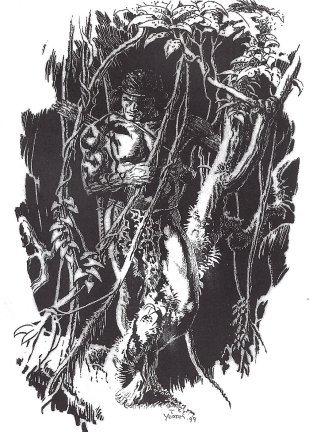


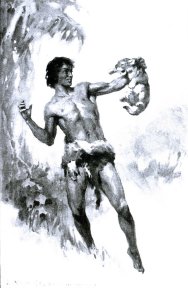
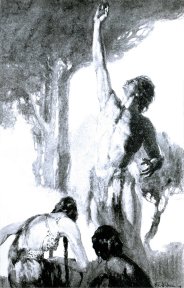
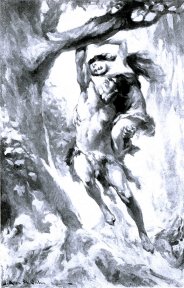

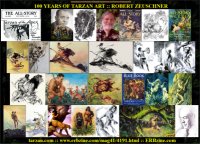
![]()
![]()
![]()
![]()

![]()